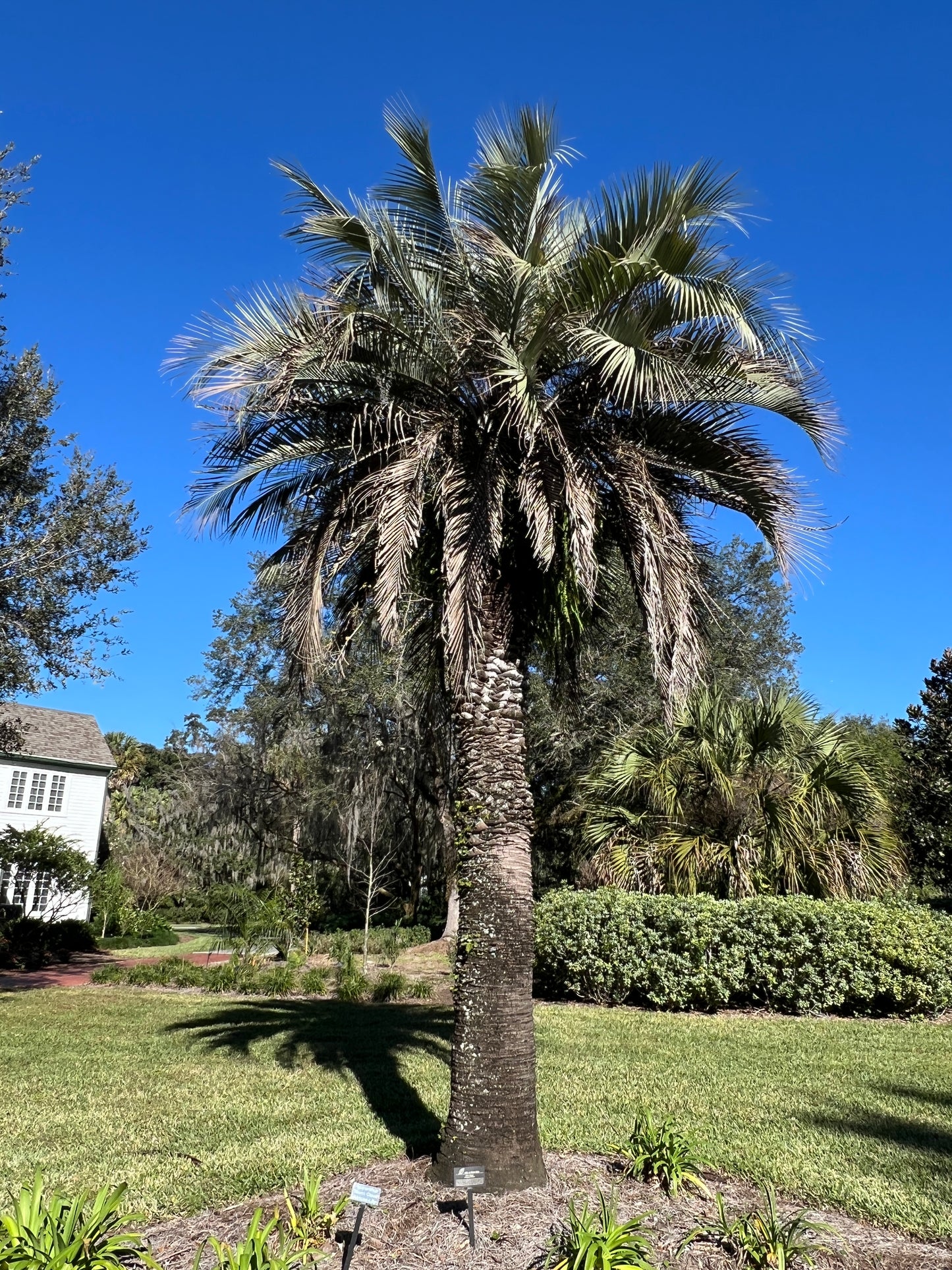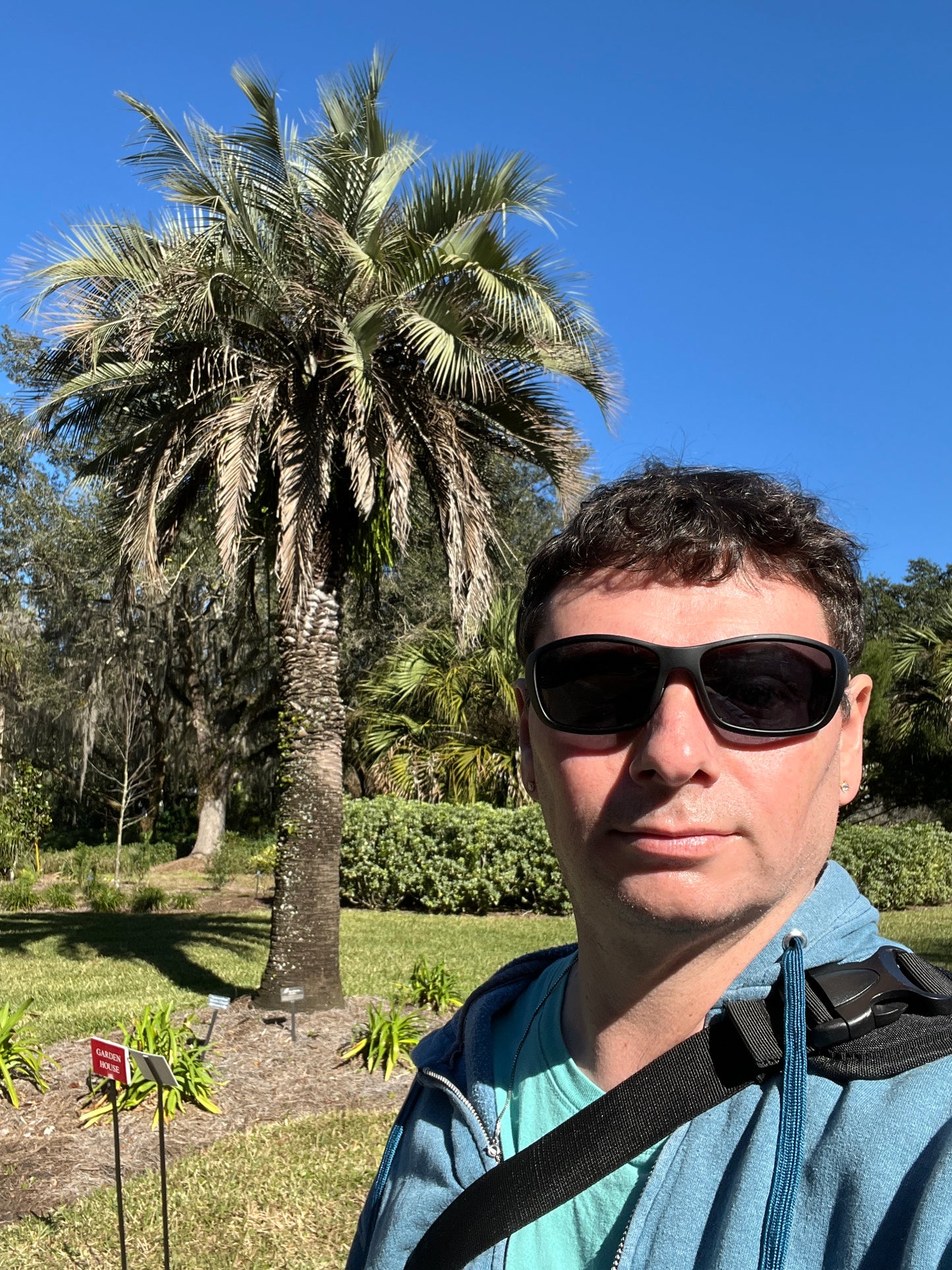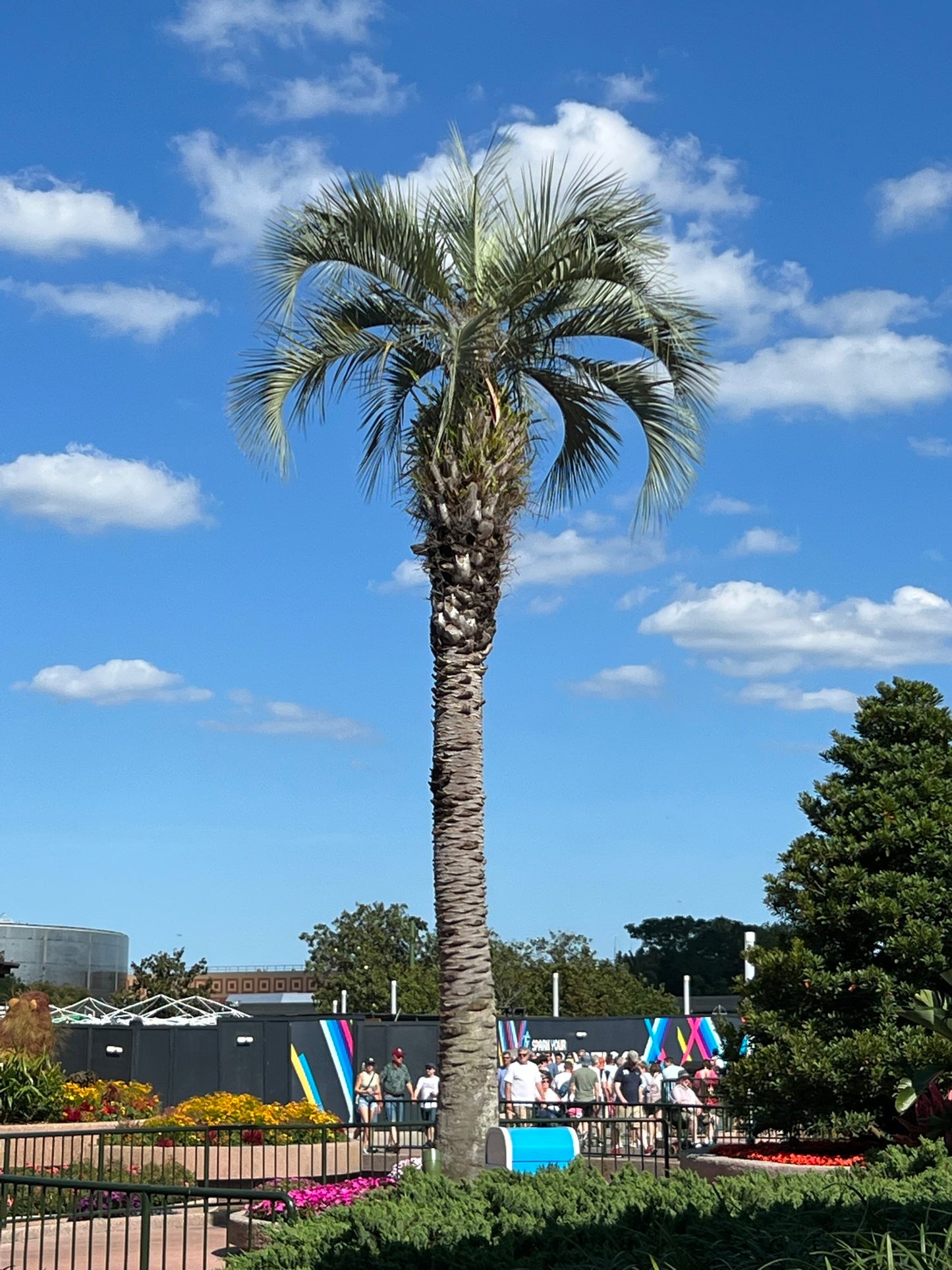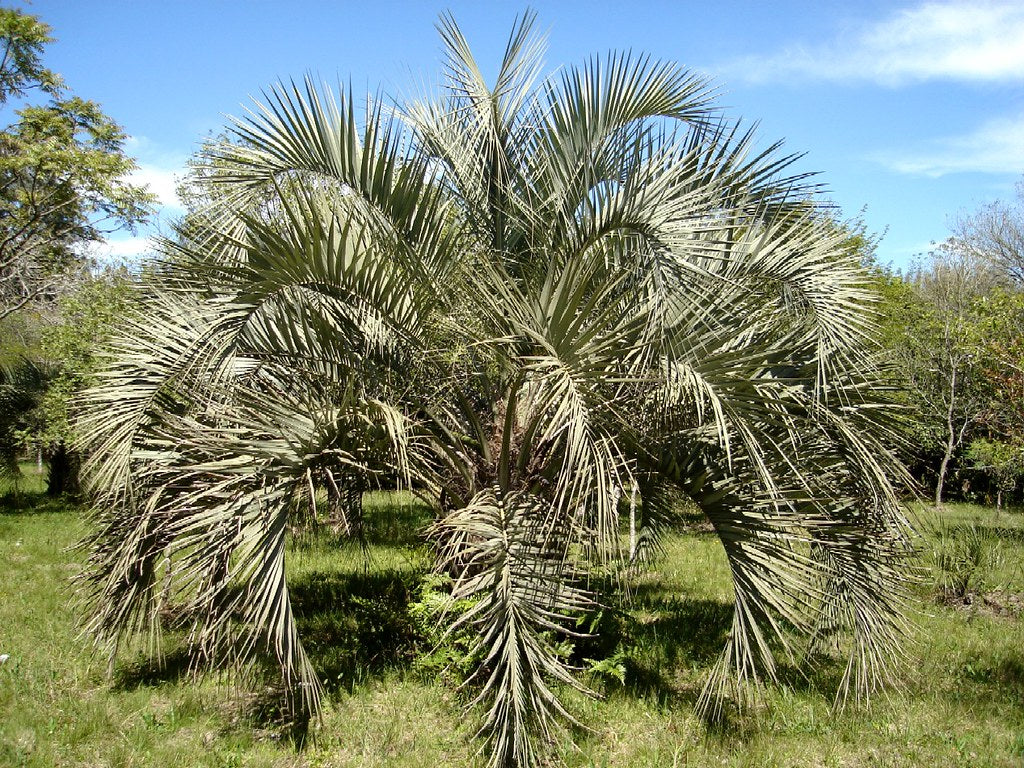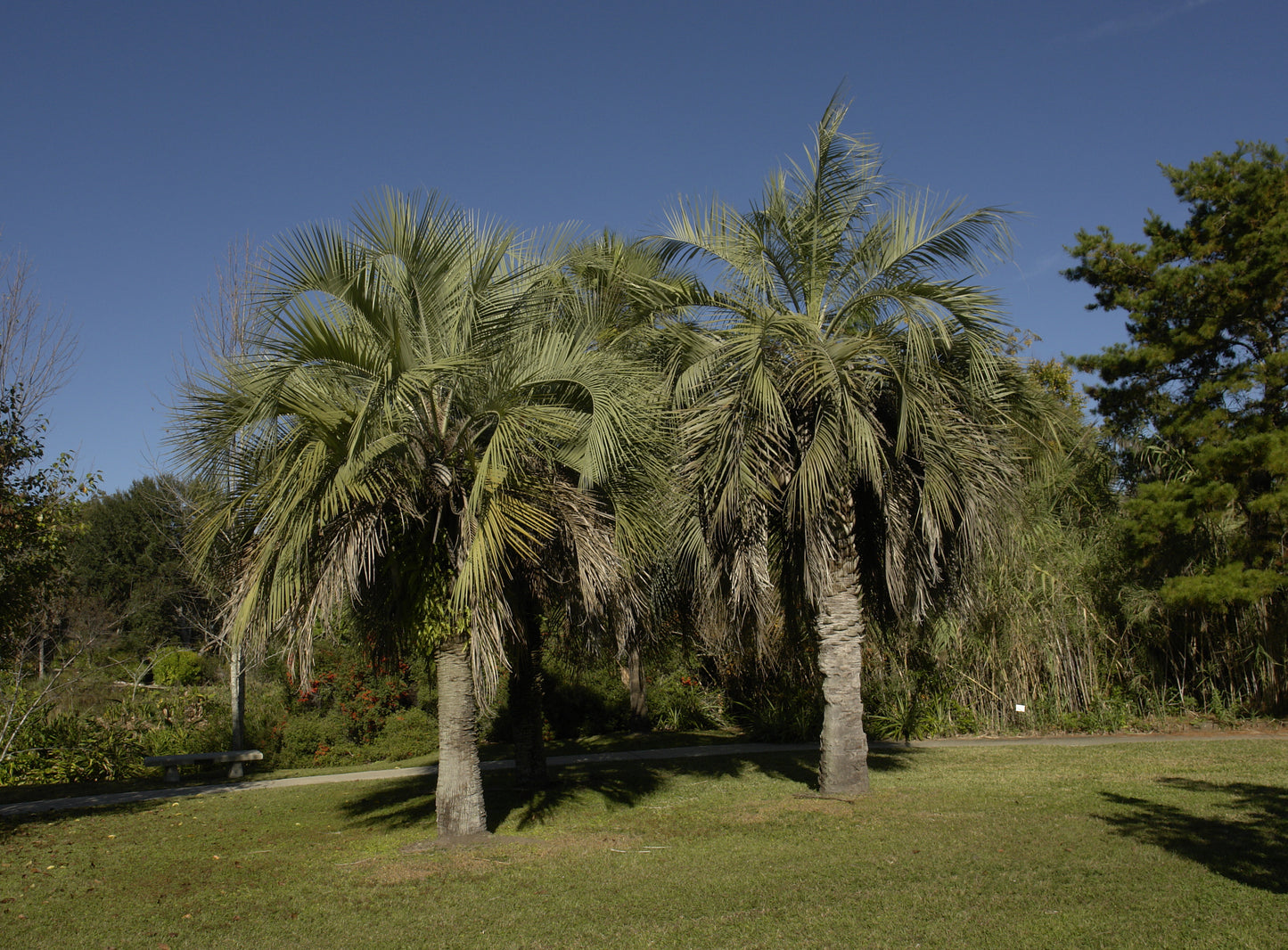Floridaseeds
Jelly Palm Butia capitata 20 Seeds USA Company
Jelly Palm Butia capitata 20 Seeds USA Company
Couldn't load pickup availability
Butia capitata, commonly known as the Pindo palm or jelly palm, is a species of palm tree native to South America, particularly Brazil, Uruguay, and Argentina. Here's a detailed description:
Appearance:
Pindo palm is a medium-sized palm tree that typically reaches heights of 3 to 6 meters (10 to 20 feet), although some specimens may grow taller under optimal conditions.
It has a single, stout trunk that is typically covered in old leaf bases, giving it a rough and textured appearance.
The trunk is topped by a crown of gracefully arching, feather-like fronds.
The fronds are pinnate (feather-shaped) and can reach lengths of up to 3 meters (10 feet). They are composed of numerous leaflets arranged along a central axis.
Fruit:
One of the most distinctive features of the Pindo palm is its large, spherical fruit, which resembles a small yellow-orange plum or apricot.
The fruit is edible and has a sweet, tangy flavor, often compared to that of pineapple or mango.
It is sometimes used to make jelly, hence the common name "jelly palm."
The fruit typically ripens in late summer to early fall and is often produced in abundance, attracting wildlife such as birds and mammals.
Habitat and Cultivation:
Pindo palm is well-adapted to a variety of climates and soil types, making it a popular choice for landscaping in subtropical and Mediterranean climates.
It prefers well-drained soil and full sun but can tolerate some shade and occasional drought once established.
The tree is relatively cold-hardy compared to other palm species and can withstand temperatures as low as 15°F (-9°C) for short periods.
Landscape Uses:
Pindo palm is widely cultivated as an ornamental tree in gardens, parks, and streetscapes, particularly in regions with mild winters.
It is valued for its attractive, tropical appearance, as well as its low maintenance requirements and tolerance of urban conditions.
The tree is often used as a focal point in landscapes, planted in groups for screening or windbreaks, or used to line streets and driveways. Hardy in zones 8-11.
Growing Instructions for the Jelly Palm
- Put the seeds in warm water and let them soak for 2 days. 2. The seeds like moist, well-drained soil. Prepare a mixture of half potting soil and half sand, perlite or vermiculite. 3. Put the soil in a pot. 4. Sow the seeds on the soil and cover them with a thin layer of soil. 5. Water the soil so that it is moist but not wet. The seeds usually germinate in 2-3 months. They germinate better in warm temperatures. 6. When the seedlings are a few inches tall, they can be transplanted.
Materials
Materials
Shipping & Returns
Shipping & Returns
Dimensions
Dimensions
Care Instructions
Care Instructions
Share
